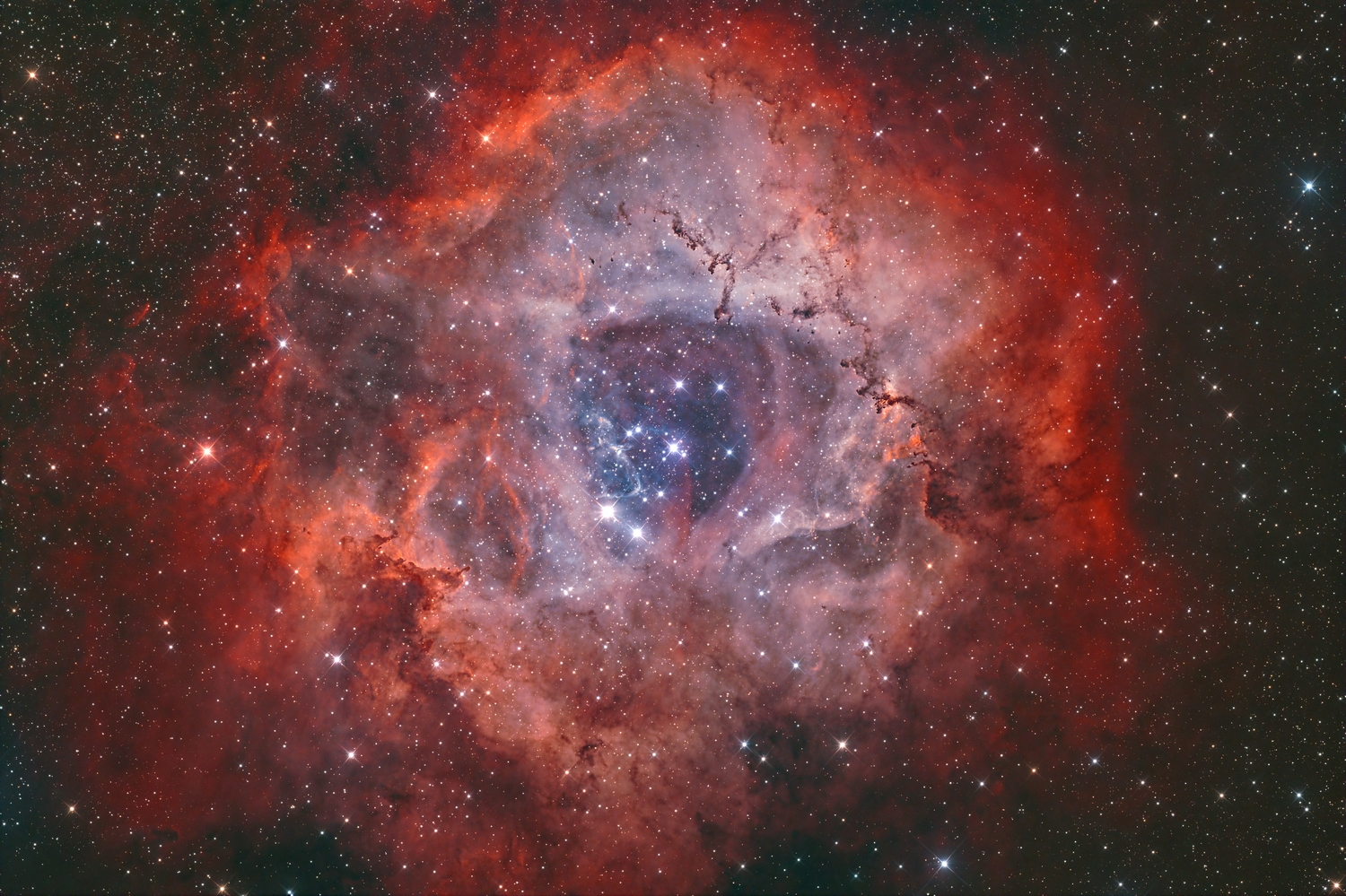Rosette Nebula
in Monoceros

The Rosette Nebula, also known as NGC 2237, is a large, bright emission nebula located in the constellation Monoceros, about 4,500 light-years from Earth. It spans roughly 50 light-years across and is one of the most visually stunning and well-known nebulae in the night sky. The nebula is home to a NGC 2244, a star cluster which consists of young, hot stars that ionize the surrounding gas, causing it to glow in vibrant hues of red and pink. These stars are responsible for the nebula’s distinctive shape, which resembles a large, blooming rose, hence the name “Rosette.” The nebula is a stellar nursery, where new stars are being born from the dense clouds of gas and dust. Its intricate structure, including dark lanes of dust and the glowing gas, makes it a favorite subject for astronomers and astrophotographers alike. Written by ChatGPT.
Imaging Details
Telescope: 6 inch f/4 Newtonian with Paracorr Type 2 (effective focal length 690mm) and 2” Feather Touch Focuser
Camera: Player One Poseidon-C Pro, Anti-Halo Pro Ha+OIII filter, Phoenix Filter Wheel 2″x5
Resolution: 1.11 arcsec/px
Mount: Mesu Mount 200
Guiding: Player One OAG Max and ZWO ASI290MM Mini guide camera
Exposure Length: HOO: 300 sec x 28, OSC: 300 sec x 29
Location: Winter Star Party, FL
Date: 1/30/2025
Software: SciTech, SkyGuide (Innovations Foresight), N.I.N.A., Optic FocusLynx, Pixinsight, SkySafari Pro
